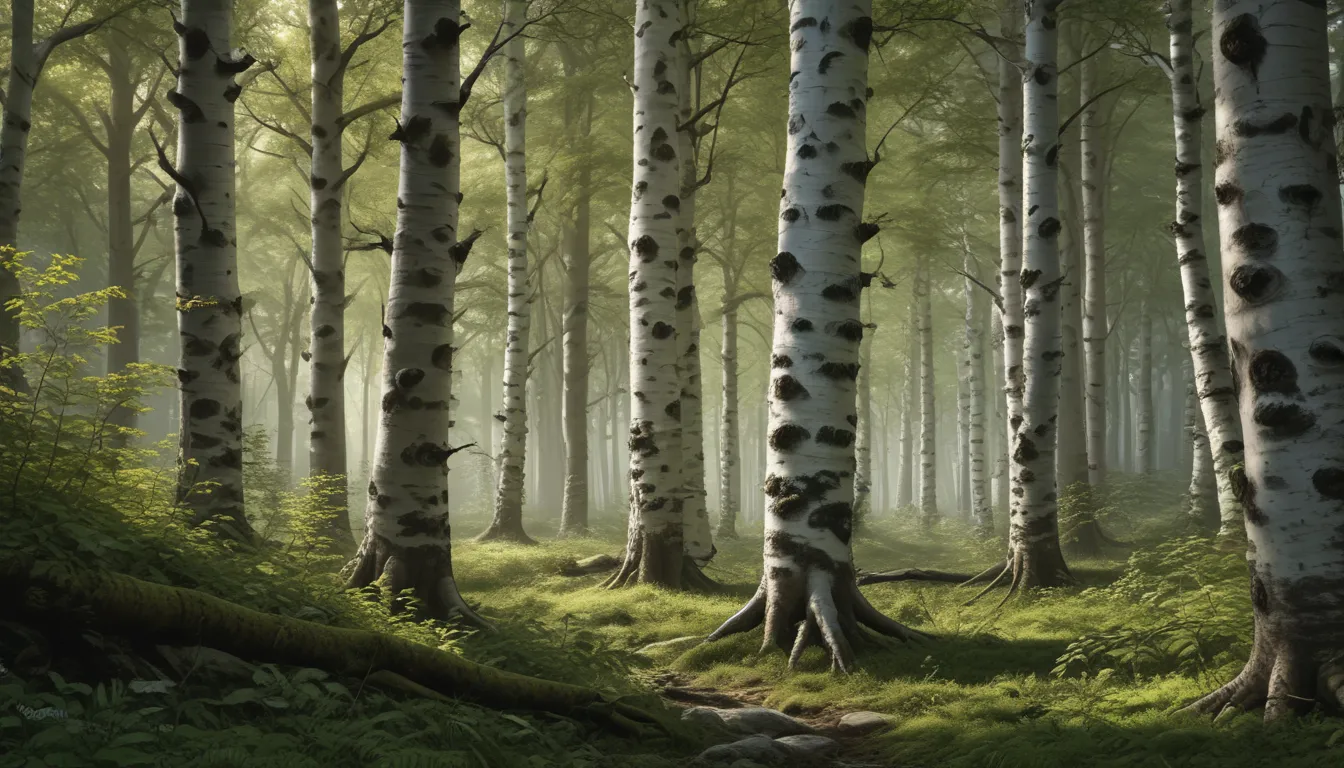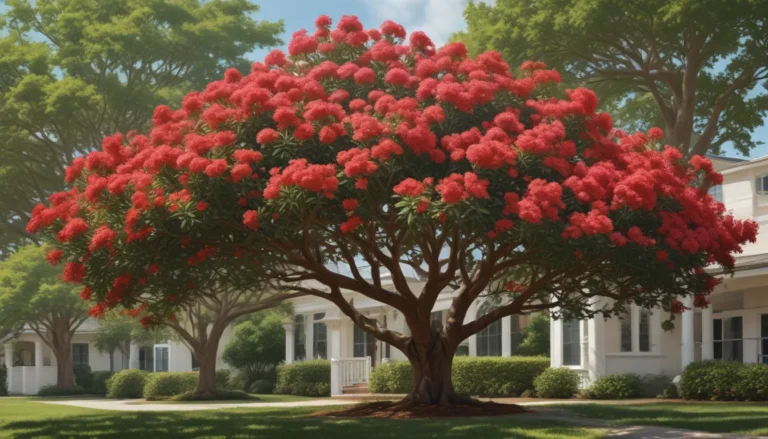The pictures we use in our articles might not show exactly what the words say. We choose these pictures to make you interested in reading more. The pictures work together with the words but don’t take their place. The words still tell you the important facts.
Are you curious about the enchanting world of white alder trees? Nestled in the landscapes of western North America, these majestic trees captivate with their distinctive white bark, serrated leaves, and cone-like fruits. Join us on a journey through the realm of white alders as we explore their unique characteristics, ecological importance, and historical significance. From supporting diverse wildlife to symbolizing resilience and environmental stewardship, white alder trees offer a wealth of fascinating facts waiting to be uncovered.
Key Takeaways:
- The white alder tree, native to western North America, grows up to 80 feet tall and provides food and habitat for wildlife, making it crucial for the ecosystem’s health and resilience.
- With its nitrogen-fixing ability and use in stream restoration, the white alder tree symbolizes environmental stewardship and resilience, making it valuable for urban landscapes and wildlife habitat restoration.
The Magnificence of the White Alder Tree
Native to Western North America
The white alder, scientifically known as Alnus rhombifolia, is a deciduous tree native to the western part of North America. Thriving in riparian areas like stream banks and wetlands, its roots play a crucial role in stabilizing soil and preventing erosion. Adapted to the region's Mediterranean climate, with dry summers and wet winters, the white alder is a vital component of the local ecosystem.
Impressive Heights and Growth Rate
Known for its towering presence, white alder trees can reach heights of 50 to 80 feet. With tall, straight trunks and spreading branches, they stand out in their natural habitat. The rapid growth rate and large size of these trees make them invaluable for reforestation and landscaping projects, adding both beauty and ecological benefits to the surroundings.
The Allure of White Alder Features
Distinctive Diamond-Shaped Leaves
The leaves of the white alder are a sight to behold, with their broad, diamond-shaped structure and serrated edges. Vibrant green during the growing season, these leaves turn a brilliant yellow in the fall before winter's arrival. The lush canopy they provide adds a touch of elegance to the landscape.
Cone-Like Fruits for Wildlife
White alder trees produce small, cone-like fruits that contain tiny seeds, serving as a vital food source for various wildlife species, including birds and small mammals. This ecological role highlights the tree's significance in providing food and shelter, contributing to the local ecosystem's health and biodiversity.
Lightweight and Versatile Wood
The wood of the white alder is known for its lightness and softness, making it suitable for a range of applications. From woodworking projects like furniture and cabinets to being used as firewood and in charcoal production, the versatile nature of white alder wood has made it a valuable resource throughout history.
Ecological Importance of White Alder Trees
Guardians of Riparian Ecosystems
White alder trees play a crucial role in riparian ecosystems by providing shade, stabilizing stream banks, and enriching the soil with organic matter. Their presence supports a diverse array of plant and animal species, contributing to the overall health and resilience of the riparian environment.
Nitrogen-Fixing Abilities
One of the fascinating aspects of the white alder is its ability to fix nitrogen in the soil through a symbiotic relationship with nitrogen-fixing bacteria. This unique capability enhances soil fertility and benefits neighboring plants, showcasing the tree's ecological importance beyond its physical attributes.
Vital for Stream Restoration Projects
Due to their ability to stabilize stream banks and improve water quality, white alder trees are often key components in stream restoration projects. Their extensive root systems help prevent erosion and filter pollutants, enhancing the overall health of aquatic ecosystems and promoting biodiversity.
Cultural and Symbolic Significance of White Alders
Valuable for Wildlife Habitat Restoration
Wildlife habitat restoration efforts frequently involve the planting of white alder trees due to their capacity to provide food and shelter for various animal species. This proactive approach not only supports biodiversity but also contributes to the preservation of native wildlife populations for future generations to admire and cherish.
Ideal for Urban and Suburban Landscapes
In addition to their ecological significance, white alder trees are well-suited for urban and suburban landscapes, enhancing green spaces and providing aesthetic value. Their adaptability to different soil types and moisture levels makes them a desirable choice for landscaping projects, bringing nature closer to urban environments.
A Symbol of Resilience and Environmental Stewardship
The white alder embodies resilience and environmental stewardship, symbolizing the harmonious relationship between nature and humans. Its presence in natural and cultivated landscapes emphasizes the importance of preserving and nurturing ecosystems for the well-being of all living beings, showcasing the enduring power of ecological stewardship.
Conclusion
White alder trees stand tall as remarkable species with diverse features and ecological significance. Their adaptability, environmental contributions, and historical uses underscore their value in various ecosystems. By recognizing and safeguarding white alders, we play a part in conserving our natural environment and sustaining its precious resources for future generations to appreciate and enjoy.
FAQs
Is the white alder a fast-growing tree?
The white alder is known for its rapid growth, especially in moist, fertile soils, reaching heights of 50 to 80 feet within 20 to 30 years under favorable conditions.
What wildlife does the white alder support?
White alder trees provide essential habitat and food for various bird species, including woodpeckers, warblers, and owls, as well as diverse insect populations that attract insectivorous birds and other wildlife.
Discover the Enchanting World of White Alder Trees
Our commitment to sharing engaging and accurate content is evident in every fact we present. As you delve into the wonders of white alder trees, trust in our dedication to delivering valuable insights and information. Join us on this journey of exploration and learning, where each discovery adds to the rich tapestry of knowledge we collectively weave. Embrace the beauty and significance of white alder trees as we celebrate their ecological importance and cultural relevance in the vibrant landscapes of western North America.






